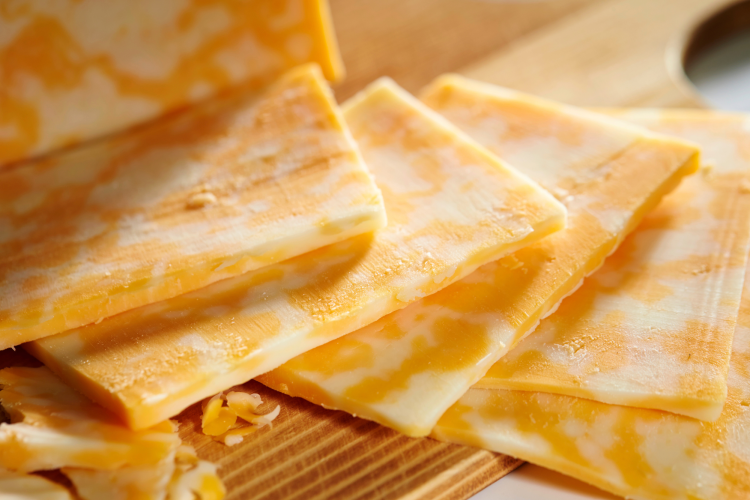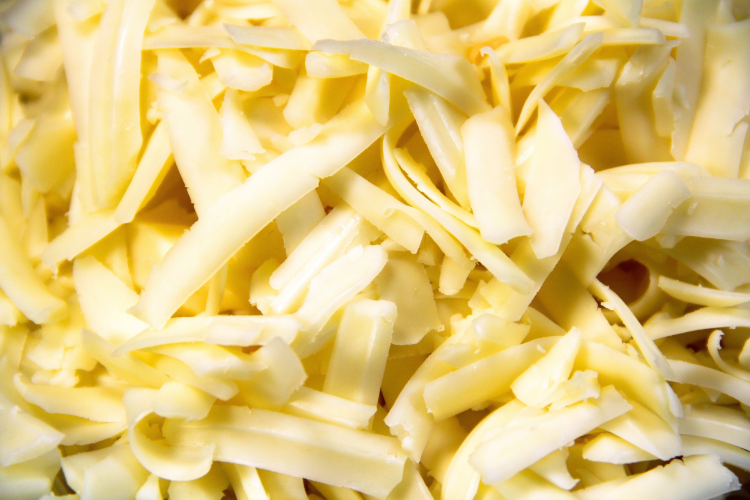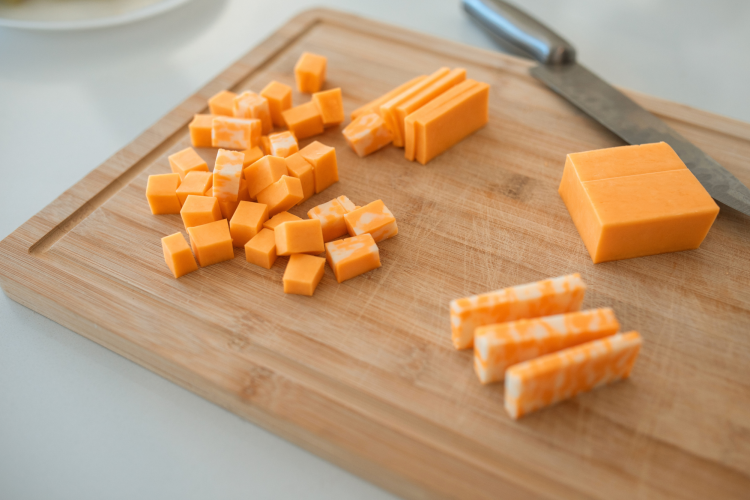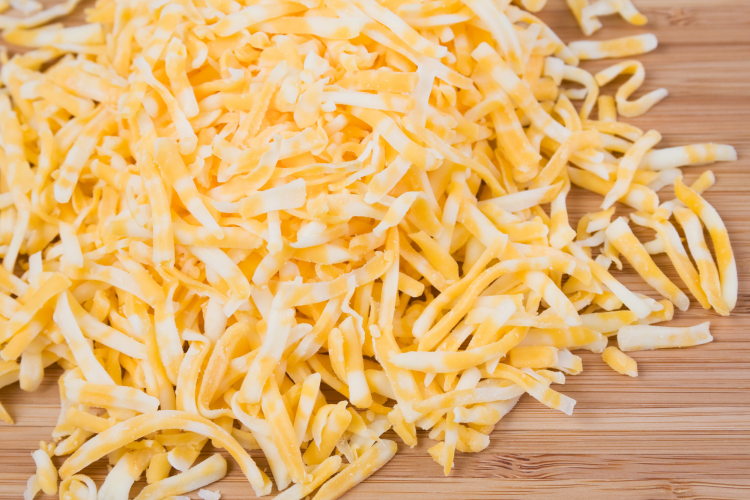Colby Jack Cheese: The Best of Both Worlds in 2025

As one of America's most recognizable processed cheeses, Colby Jack cheese is a staple in kitchens across the country and it’s easy to see why. This delightful marriage of two beloved varieties is creamy enough to appeal to those who prefer milder flavors, yet with just enough character to satisfy serious cheese lovers.
It’s the kind of cheese that melts beautifully, slices easily and works in almost everything. If you’ve been eyeing it at your local grocery aisle, perhaps it’s time to learn more about what Colby Jack cheese brings to the table.
Jump to Section
- What Is Colby Jack Cheese?
- How to Eat Colby Jack Cheese
- Best Colby Jack Cheese Recipes
- Is Colby Jack Cheese a Healthy Cheese?
- Colby Jack Cheese FAQs
What Is Colby Jack Cheese?

Colby Jack cheese is a combination of two cheeses: Colby and Monterey Jack cheese. When these two are blended together, the result is a beautiful marbled block that brings out the best of both types.
You can easily recognize this marbled cheese by its striking orange and white pattern, where the orange portions represent Colby cheese and the white, Monterey Jack. Unlike other blended cheeses that are mixed together completely, Colby Jack cheese maintains a visual distinction between its two components, which creates an appealing mosaic effect.
The History of Colby Jack Cheese
While Colby Jack may not have the centuries-old legacy of parmesan cheese, it has carved out a place of its own in the modern cheese aisle. To understand its history, we’d have to first look at the individual histories of the two cheeses it’s made from. Colby cheese was first created in 1885 by Joseph Steinwand in Colby, Wisconsin.
It was developed as a variation of cheddar cheese but with a different production process that resulted in a milder flavor and more open texture. The key difference was that Colby cheese wasn't aged as long as traditional cheddar and would go through a washing process to remove some of the acidity.

Monterey Jack cheese, on the other hand, can be traced as far back as the 1700s, around the time when Spanish missionaries started making a type of simple, mild cheese in California called “Queso blanco.” The cheese was later refined and popularized by David Jack, a businessman from Monterey County, California, in the 1800s. His version of the cheese became known as "Monterey Jack" and gained popularity throughout the American West.
The combination of these two cheeses into what we now know as Colby Jack cheese is a more recent innovation, likely developing in the mid-to-late 20th century as American cheese makers began experimenting with blending different varieties. While the exact origin of who first combined Colby and Monterey Jack isn't definitively documented, it’s clear that it emerged as part of the broader American tradition of creating new cheese varieties that appeal to local tastes.
By the 1980s and 1990s, Colby Jack cheese had become widely available in supermarkets across the U.S., its appealing appearance and mild flavor making it a favorite among families and children. Today, it remains a staple in American households and continues to be produced by major dairy companies as well as smaller artisanal cheese makers like Wisconsin Cheese Company, whose natural Colby Jack cheese can be found on Amazon.
What Type of Cheese is Colby Jack Cheese?

Colby Jack cheese falls into the category of semi-hard American cheeses. It's typically classified as a processed or blended cheese because it’s a mix of two different cheese varieties rather than being made from one type of milk and aging process. It has a relatively short aging period, typically between one to three months, which contributes to its mild flavor profile and smooth texture.
As you may have guessed, the production process requires the creation of two separate batches of Colby and Monterey Jack cheese curds first, then combining them before pressing. This method is different from creating the two cheese varieties from scratch and involves more than just mixing already-aged cheeses together. The curds are combined while still fresh, allowing them to bond together during the pressing and brief aging process.
From a culinary classification standpoint, Colby Jack cheese is considered a table cheese, which means you can eat it fresh as is. However, it's also an excellent cooking cheese due to how well it melts. It doesn't have the sharp bite of aged cheddar cheese or the stringy quality of mozzarella cheese but instead offers a balanced middle ground that works well in a variety of applications.
What Does Colby Jack Cheese Taste Like?
The taste of Colby Jack cheese can best be described as having a blend of mild and slightly tangy notes. The Colby portion contributes a subtle sharpness to the cheese that's reminiscent of young cheddar cheese but significantly milder. Meanwhile, the Monterey Jack component adds a creamy, buttery flavor to it, with hints of sweetness to balance out the overall taste profile.
When you first experience the taste of Colby Jack cheese, you'll notice it has a smooth, creamy consistency that melts pleasantly on the tongue. The initial flavor is mild and approachable but as you continue to chew, you might notice subtle nutty undertones and a very gentle tanginess that gives way to a clean finish. Thankfully, it’s one of those cheeses that doesn't leave a strong aftertaste in your mouth, so you know it won't compete with or overpower other flavors in a dish.
Whether you're using Colby Jack cheese slices for a quick sandwich or melting a Colby Jack cheese block into a warm dip, its balanced flavor remains consistent throughout. It’s also worth noting that when served at room temperature, Colby Jack cheese has a slightly firm but yielding texture that's easy to slice or bite into. But once you melt it, it becomes smooth and creamy without separating or getting stringy.
What Cheese Is Most Similar to Colby Jack?

When looking for a Colby Jack cheese substitute, look no further than Colby cheese and Monterey Jack cheese. If you have both available, you can create your own blend by combining equal portions, though you'll miss the marbled visual appeal of commercial Colby Jack cheese.
Mild cheddar cheese is another excellent substitute, particularly white cheddar that's been aged for only a few months. This option has a similar mild sharpness and creamy texture, though it lacks the buttery notes of Monterey Jack.
Monterey Jack cheese on its own can substitute for Colby Jack cheese, especially when you want to highlight its mild and creamy qualities. This works especially well in Mexican-inspired dishes or when you want a cheese that will melt smoothly without adding much flavor complexity.
The texture and melting properties are very similar to those of Colby Jack cheese. Pepper Jack cheese — Monterey Jack with added peppers — is another Colby Jack cheese substitute worth exploring.
Yes, it’ll introduce some heat and spice that regular Colby Jack cheese doesn't have, but the base cheese characteristics are the same. And for those looking for widely available alternatives, mild provolone or young Gouda can work in a pinch, especially in recipes that call for mild flavors and meltability.
How to Eat Colby Jack Cheese
One of the best things about Colby Jack cheese is how versatile it is. There are many ways to enjoy it, either straight out of the package or as part of a more elaborate dish.
What Is Colby Jack Cheese Good For?

The most straightforward way to savor Colby Jack cheese is at room temperature, either on its own or paired with crackers. Just make sure to let it sit out for about 15 to 20 minutes before serving so it can soften a bit. If you’re entertaining and want to serve a fancy cheese board, simply slice your Colby Jack cheese into wedges or cubes and arrange it alongside fresh fruits like grapes, apples or pears. The mild flavor pairs beautifully with both sweet and tart fruits, while the visual appeal of the marbled cheese adds an interesting touch.
Colby Jack cheese is also great for making cheese sauces, as it melts at a relatively low temperature and retains its smooth consistency throughout while cooking. And if you add it to a casserole, you’ll find that it melts evenly without becoming oily or separated. In Mexican and Tex-Mex cuisine, Colby Jack cheese serves as an excellent substitute when you want something milder than traditional Mexican cheeses but more flavorful than plain Monterey Jack. Sprinkle it on enchiladas, burritos and nachos for a nice golden finish.
A roundup of Colby Jack cheese serving ideas wouldn’t be complete without mentioning wine pairings. Pair your Colby Jack cheese with light to medium-bodied white wines like Chardonnay or Sauvignon Blanc. Light red wines such as Pinot Noir also work well and complement its mild flavors without overwhelming them, while beer enthusiasts will find that light lagers and wheat beers like Allagash pair nicely with this cheese.
Best Colby Jack Cheese Recipes
Whether you’re slicing into a Colby Jack cheese block or reaching for convenient Colby Jack cheese slices, this marbled cheese could be your next favorite ingredient. Below, you’ll find some delicious and creative ways to cook with it.
Breakfast Casserole

A breakfast casserole featuring Colby Jack cheese is perfect for holiday mornings or brunch entertaining. Layer bread cubes, cooked sausage and shredded Colby Jack cheese in a baking dish, then pour over a mixture of beaten eggs and milk. Refrigerate overnight and bake in the morning for a dish that serves a crowd with minimal effort.
Colby Jack Cheese Balls
If you’re looking for a winning appetizer for your next dinner soiree, try Colby Jack cheese balls rolled in chopped pecans. To make it, mix softened cream cheese with grated Colby Jack cheese, minced garlic and fresh herbs, then form into balls and roll in finely chopped pecans. The mild flavor of Colby Jack cheese pairs wonderfully with the nutty crunch of pecans.
Stuffed Chicken With Spinach and Colby Jack
For the main course, you can make stuffed chicken breasts filled with spinach and Colby Jack cheese. This recipe is surprisingly easy to execute. You take butterfly chicken breasts, stuff them with sautéed spinach and shredded Colby Jack cheese, then secure with toothpicks and bake. The cheese will melt into the spinach, creating a creamy filling that keeps the chicken moist and flavorful.
Is Colby Jack Cheese a Healthy Cheese?

From a nutritional standpoint, Colby Jack cheese is packed with several important nutrients that can contribute to a balanced diet. A typical one-ounce serving contains approximately 110 calories, nine grams of fat, seven grams of protein and less than a gram of carbohydrates. While Colby Jack cheese calories are something to keep in mind if you're watching your daily intake, the relatively low carbs and high protein content make it a good choice for home chefs or fitness enthusiasts looking to increase protein intake.
Colby Jack cheese is also an excellent source of calcium, providing about 20% of the daily recommended value in a single ounce. This makes it particularly beneficial for bone health, especially in children, teenagers and older adults. Not only that, but it also contains significant amounts of phosphorus, which, according to the Cleveland Clinic, works with calcium to maintain strong bones and teeth, as well as vitamin B12, which is essential for nervous system function and red blood cell formation. These benefits are a big part of Colby Jack cheese's nutrition profile.
However, like most cheeses, Colby Jack is relatively high in saturated fat, with one ounce containing about six grams of the stuff. Another reason to consume Colby Jack cheese thoughtfully is its high sodium content, especially if you’re on a sodium-restricted diet. Furthermore, Colby Jack cheese is still a processed cheese in the sense that it combines two different cheese types, so it may not be as minimally processed as single-variety artisanal cheeses.
To keep your Colby Jack cheese fresh, wrap it in wax paper or parchment paper, then place it in a loose plastic bag before storing it in the refrigerator. This allows the cheese to breathe while preventing it from drying out. Properly stored, it will maintain quality for three to four weeks past its sell-by date.
Colby Jack Cheese FAQs
Is Colby Jack Just Cheddar and Mozzarella?

No, Colby Jack cheese is not made from cheddar cheese and mozzarella cheese, though the confusion is understandable given the visual similarities. The orange and white marbled look of Colby Jack might suggest a combination of orange cheddar and white mozzarella, but this isn't accurate. As previously mentioned, Colby Jack cheese is made by combining Colby cheese and Monterey Jack cheese.
Is Colby Jack the Same as Monterey Jack?
Colby Jack cheese and Monterey Jack cheese are not the same, though they do share one similarity. This confusion often arises because Monterey Jack is one of the two cheeses used to make Colby Jack cheese, but the two have distinctly different qualities.
Next time you're standing in the cheese aisle looking at a colorful marbled wheel of Colby Jack cheese, you’ll know exactly why this popular cheese is so special. Its unique production process creates a cheese that's visually striking while delivering a perfectly balanced flavor that appeals to both children and adults alike.
Beyond its flavor, Colby Jack cheese’s nutrition is another reason for its popularity. It’s a good source of calcium and protein and it fits easily into a variety of family-friendly recipes. Keep in mind Colby Jack cheese calories as you enjoy it in larger portions, though, especially if you're watching your daily intake.
To learn even more, check out other experiences happening on Classpop!

